I used to love spontaneous hikes with my kids. We’d grab some water bottles, lace up our sneakers, and hit the trail. But as my kids got older, the dynamic shifted—suddenly, every hike had to involve friends. Every. Single. Time. And while I’m all about community, I found that needing to pre-arrange hiking buddies started to limit our ability to just get up and go.
Enter geocaching.
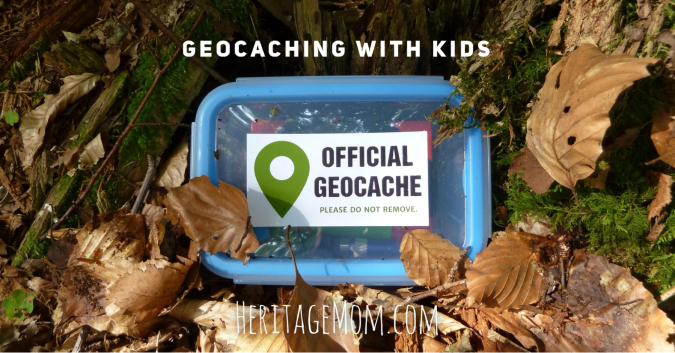
I’d read about it for years and always thought it sounded like fun. I figured that maybe a targeted adventure—with a purpose and a sense of mystery—could hold just as much appeal as hiking with friends. I was right.
So, What Is Geocaching?
Geocaching with kids is like a modern-day treasure hunt using GPS coordinates. You download the Geocaching app, search for nearby geocaches (small hidden containers), and set out to find them. Some are hidden in parks or wooded areas, others are tucked in plain sight in your local shopping center parking lot. You just never know!
We started with a few geocaches near our home, but now we look them up anytime we have a free moment—whether we’re out of town, visiting family, or even running errands. It’s a perfect way to explore new areas and add excitement to familiar places.
The SWAG Factor
One of my kids’ favorite parts of geocaching is the SWAG—a term that stands for “Stuff We All Get.” Many caches contain small trinkets or items you can trade. The rule is simple: if you take something, leave something of equal or greater value in return. We keep a little bag in the van stocked with things like:
- Stickers (in Ziplock bags, as not all caches are waterproof!)
- Plastic figurines
- Keychains
- Random little whatnots from around the house
The truth? The SWAG is usually not worth getting too excited about. But for kids, the thrill is in the hunt, and the joy of finding something—even something small—is very real.
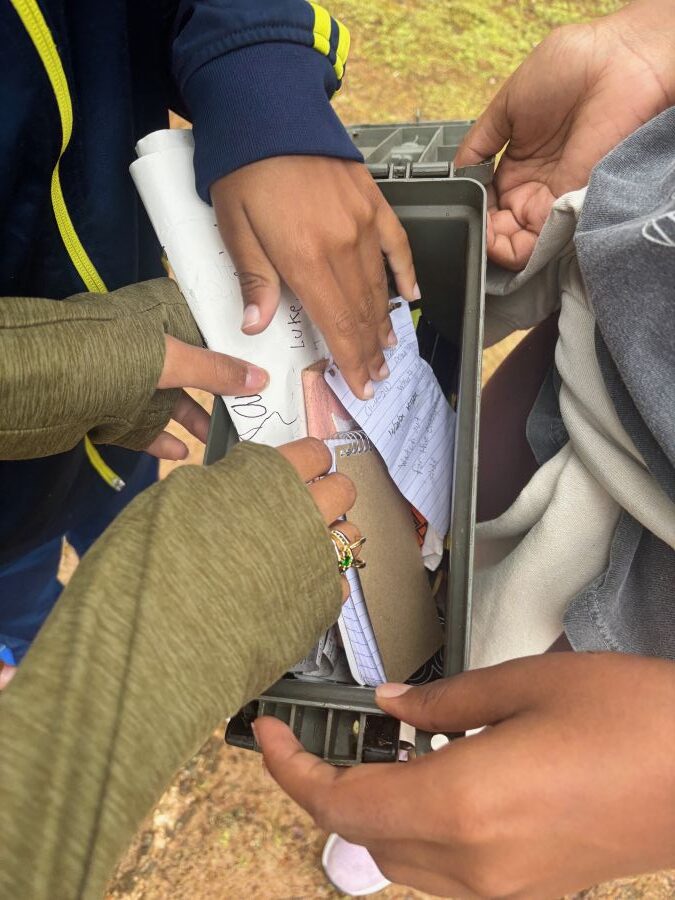
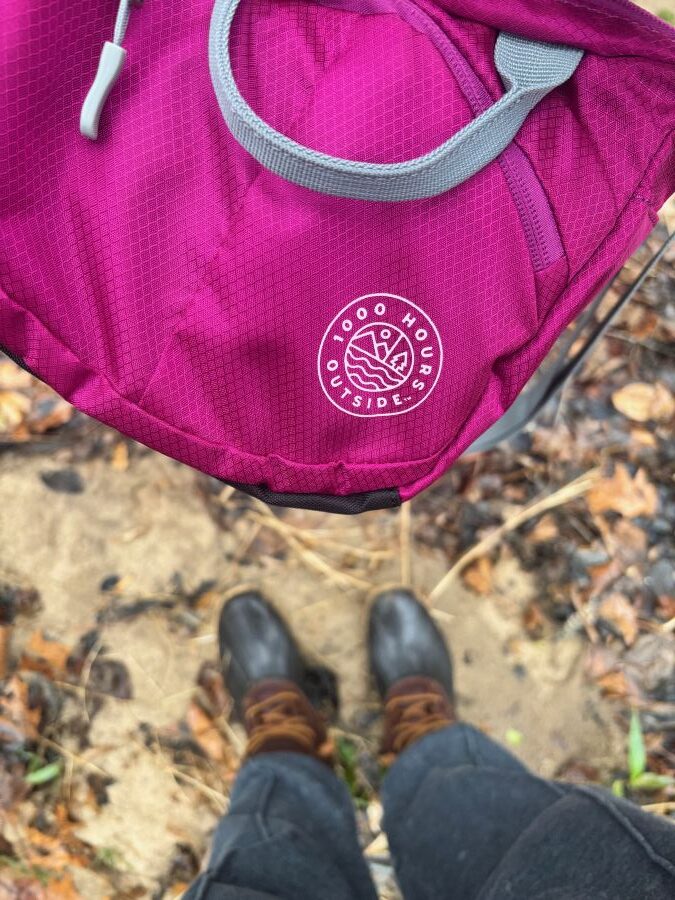
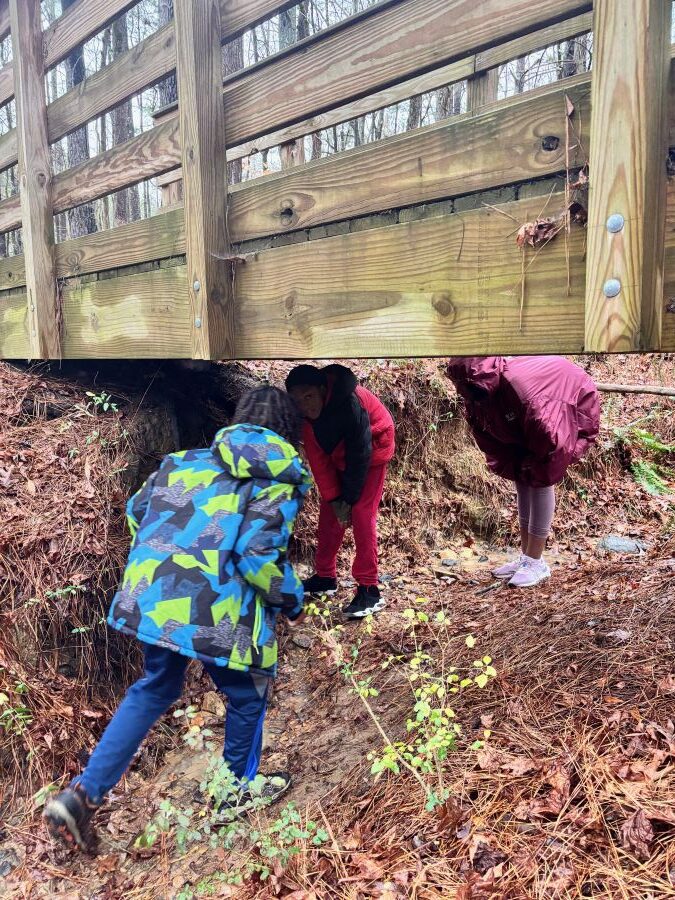
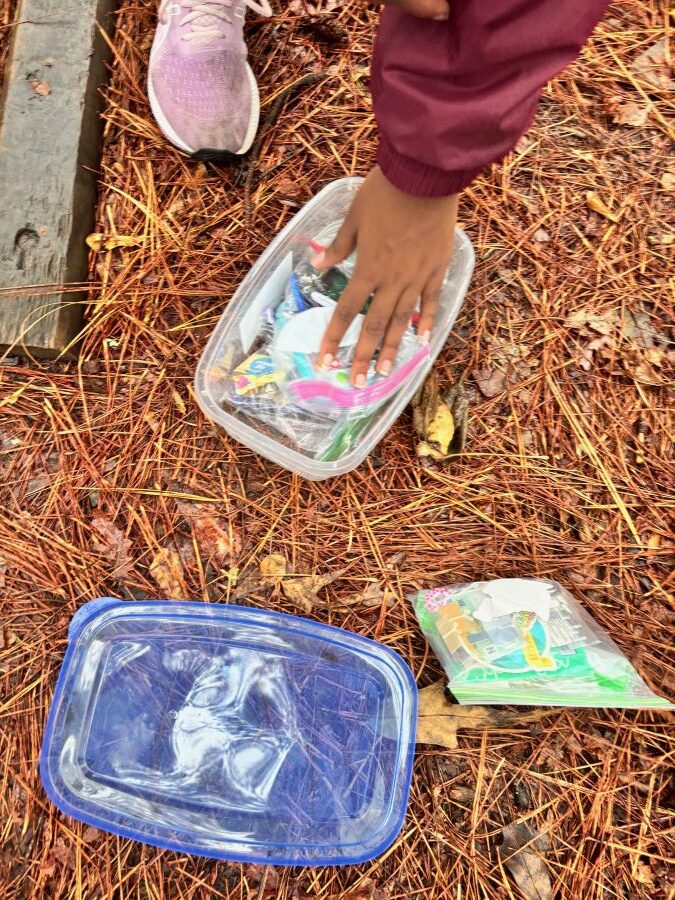
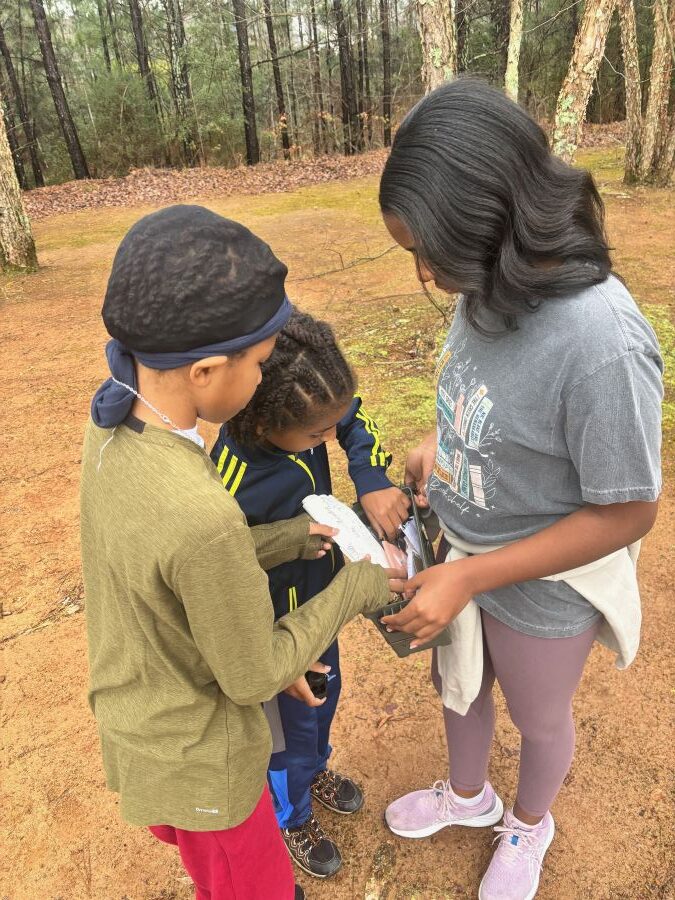
Why We Love It
Geocaching has a lot going for it:
- It’s fun for all ages—even teens and adults get into it.
- It’s free, which is a huge win for families tired of expensive outings.
- It takes as much or as little time as you want.
- It gets everyone moving and exploring.
- It encourages observation, patience, and problem-solving.
And as homeschoolers, I’ve found it naturally blends in with our love of nature, geography, and storytelling.
When the Cache Can’t Be Found
Of course, there are days when we don’t find the cache. In geocaching lingo, that’s called a DNF—Did Not Find. It can be frustrating, but logging a DNF helps the cache owner and other geocachers know that it might be missing or particularly tricky. You can always go back and try again later.
Sometimes a cache has been “muggled”—a fun term borrowed from Harry Potter that means someone who doesn’t know about geocaching found it and took or trashed it. It’s a bummer, but also a good reminder that geocaching, like life, doesn’t always go as planned.
Try It With Your Family
If you’ve never tried geocaching with kids, I highly recommend giving it a shot. It’s a low-pressure, high-reward activity that brings out a spirit of adventure in everyone. You can start today—just download the free Geocaching app and see what’s near you. You might be surprised how many “hidden treasures” are tucked away right in your own neighborhood.
We’ve fallen in love with this simple activity, and I hope this post plants a seed for your family to give it a try too. Who knows what you’ll discover?
Check out a video of my kids on the hunt! You can also read more about how and why my family spends so much time outdoors in my book A PLACE TO BELONG.

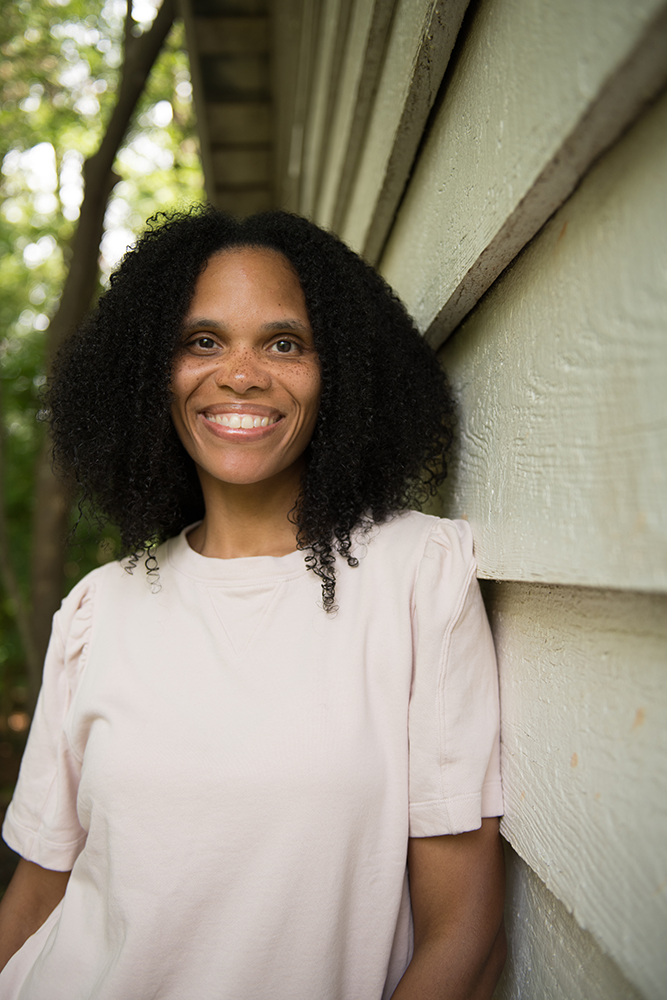

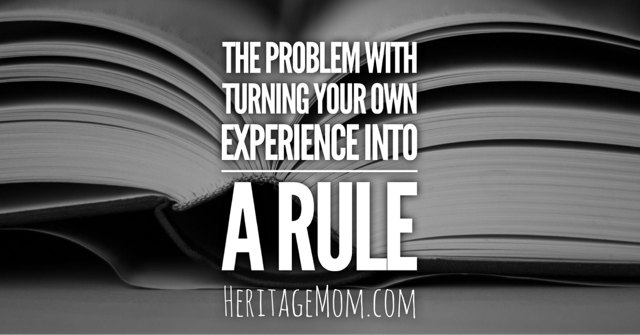
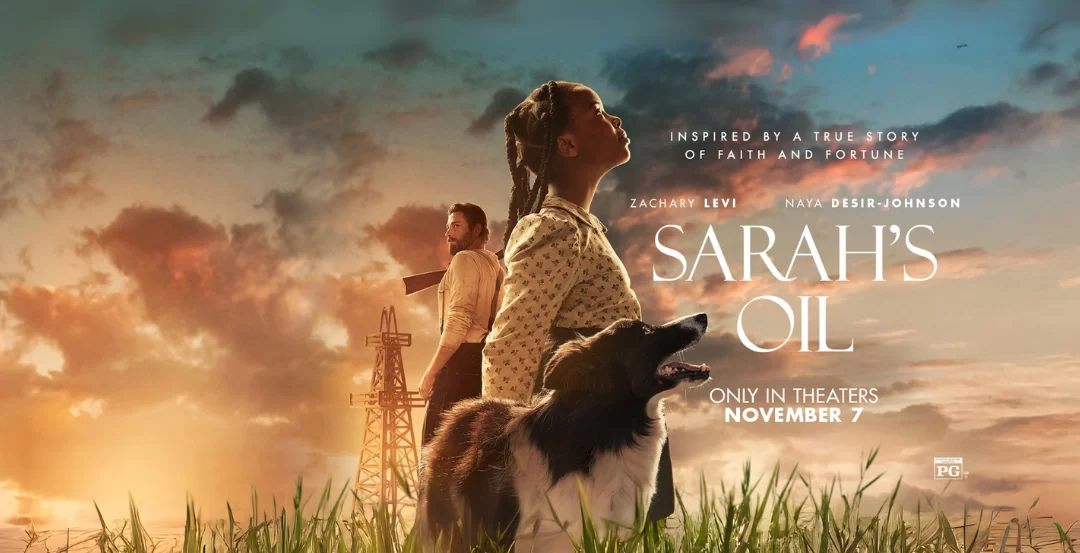
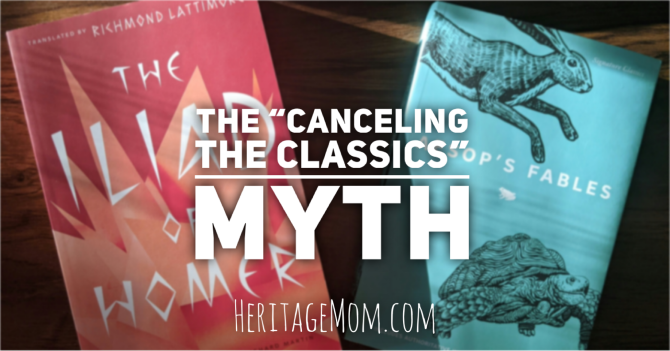
0 Comments